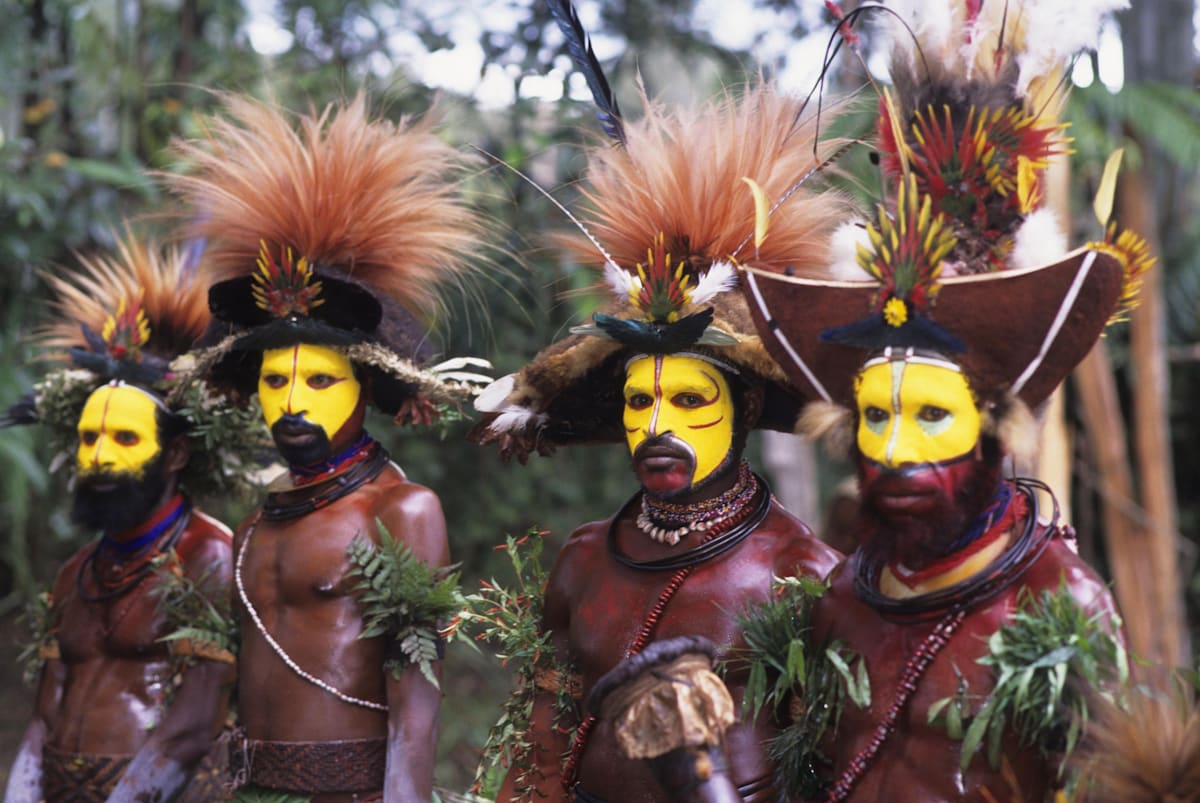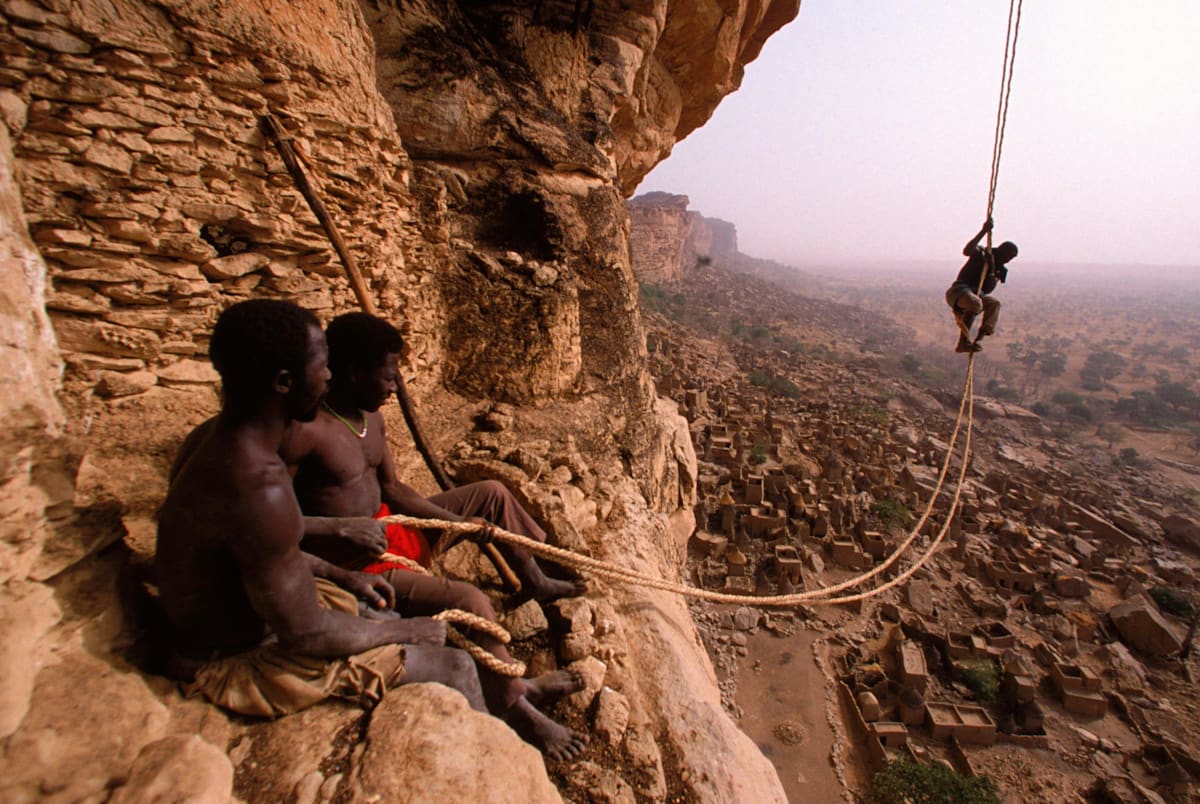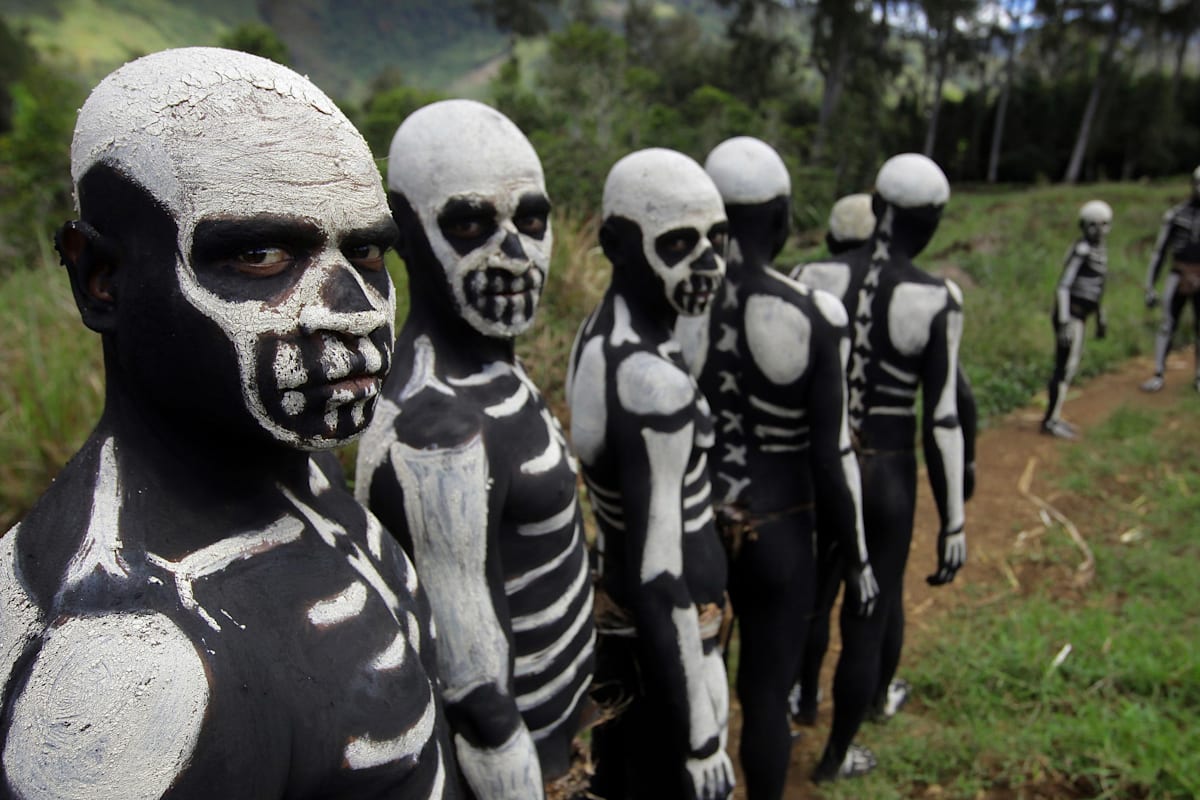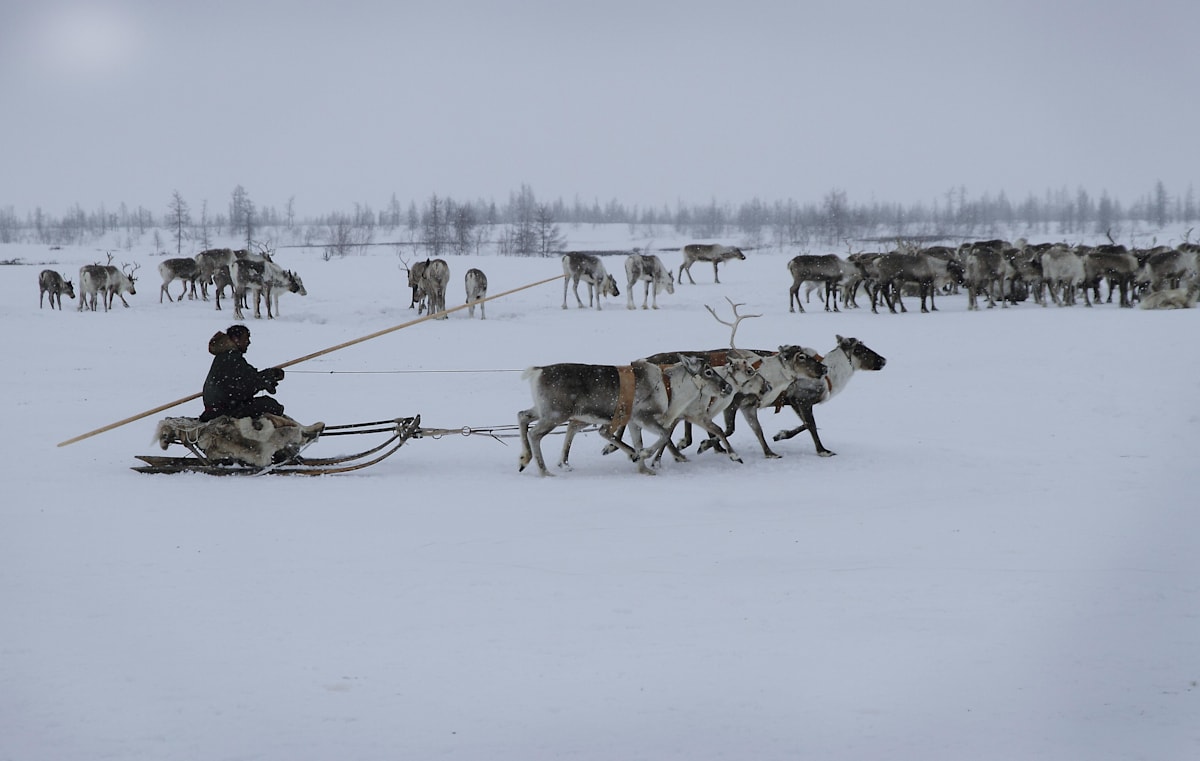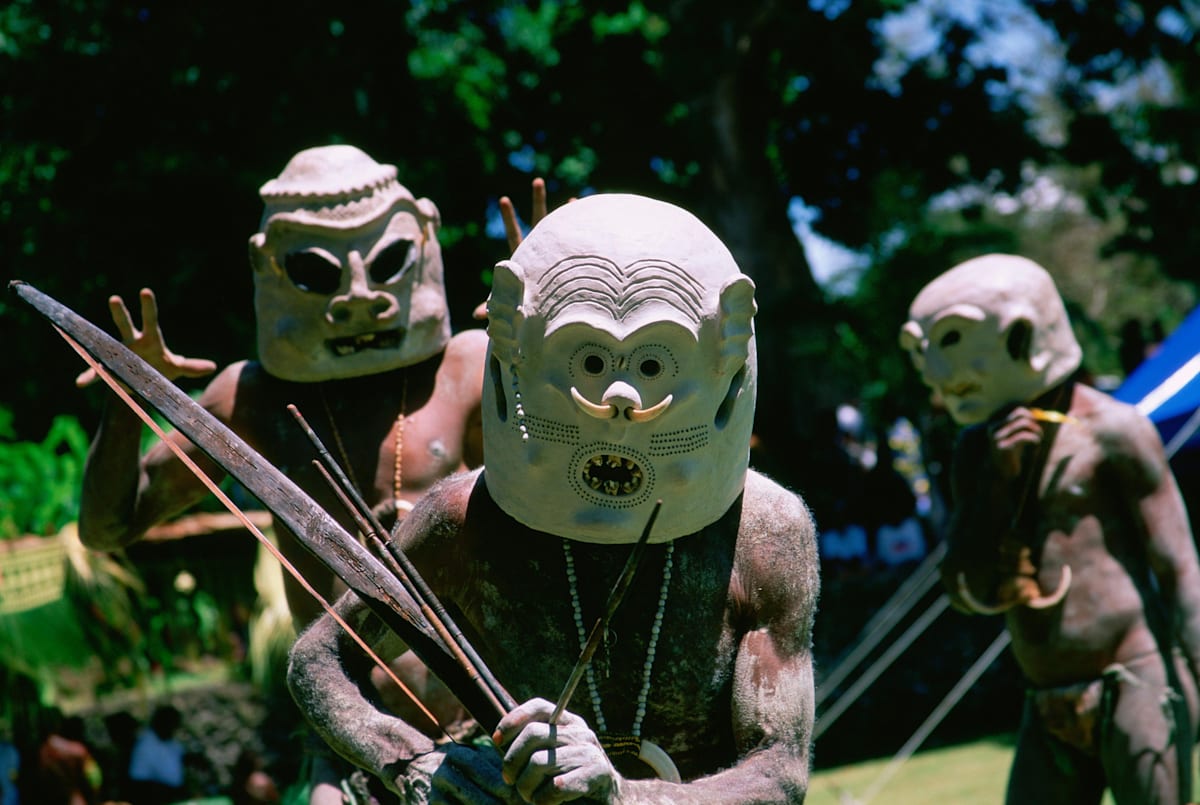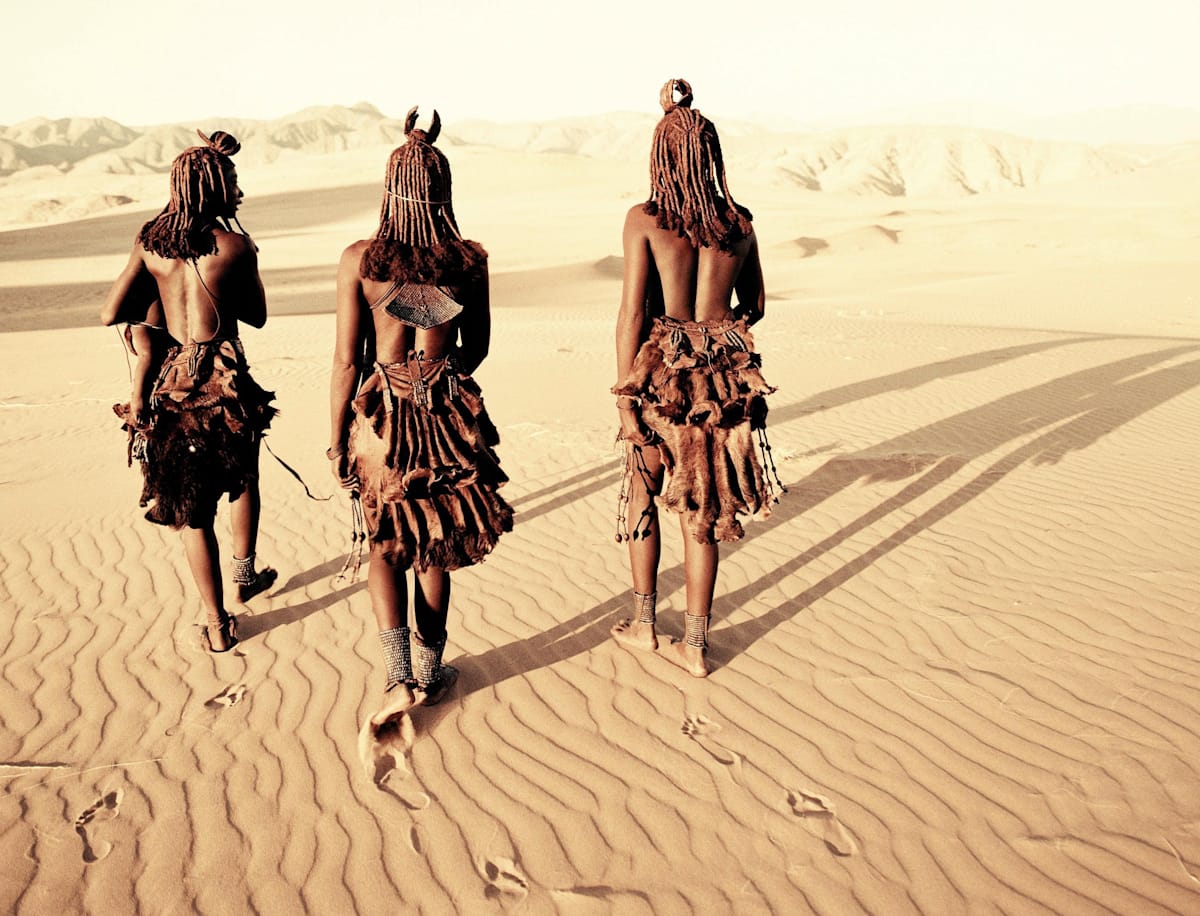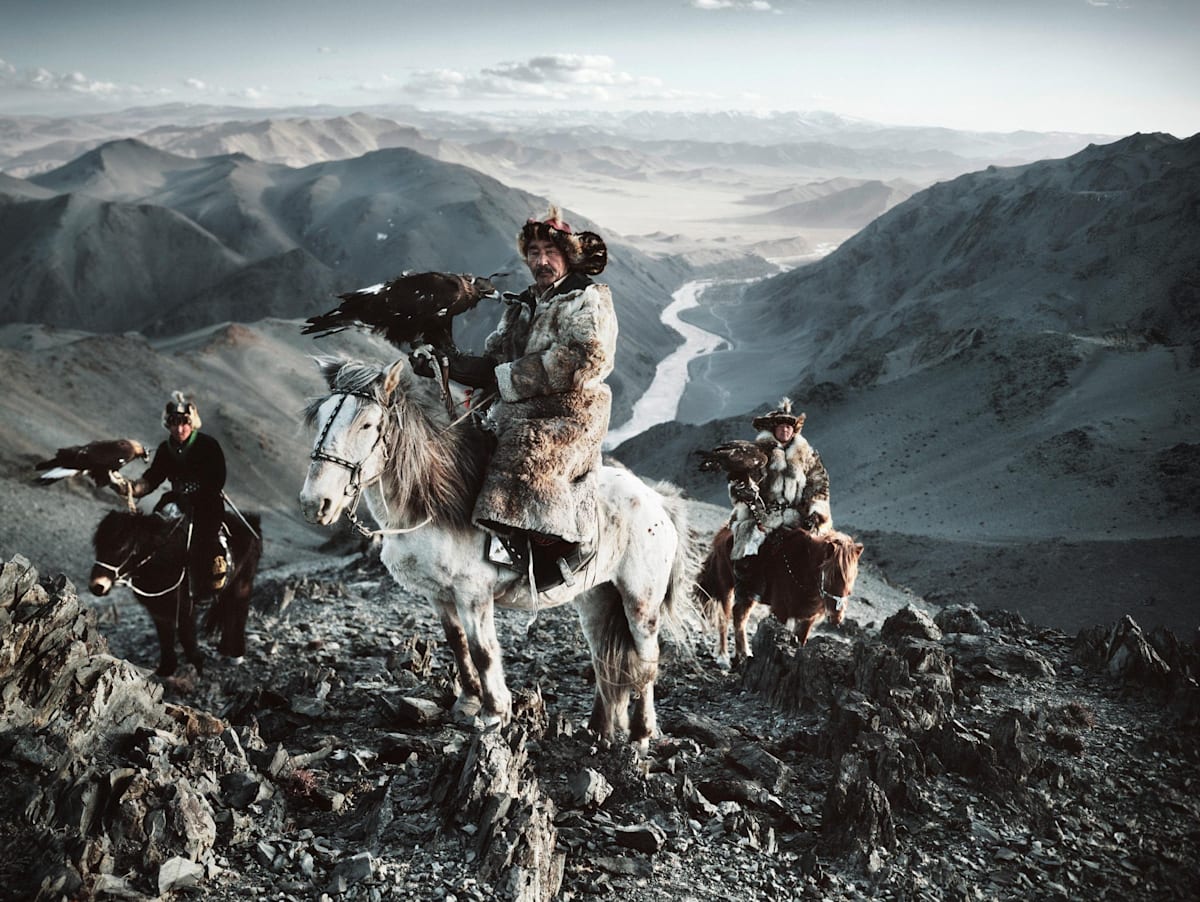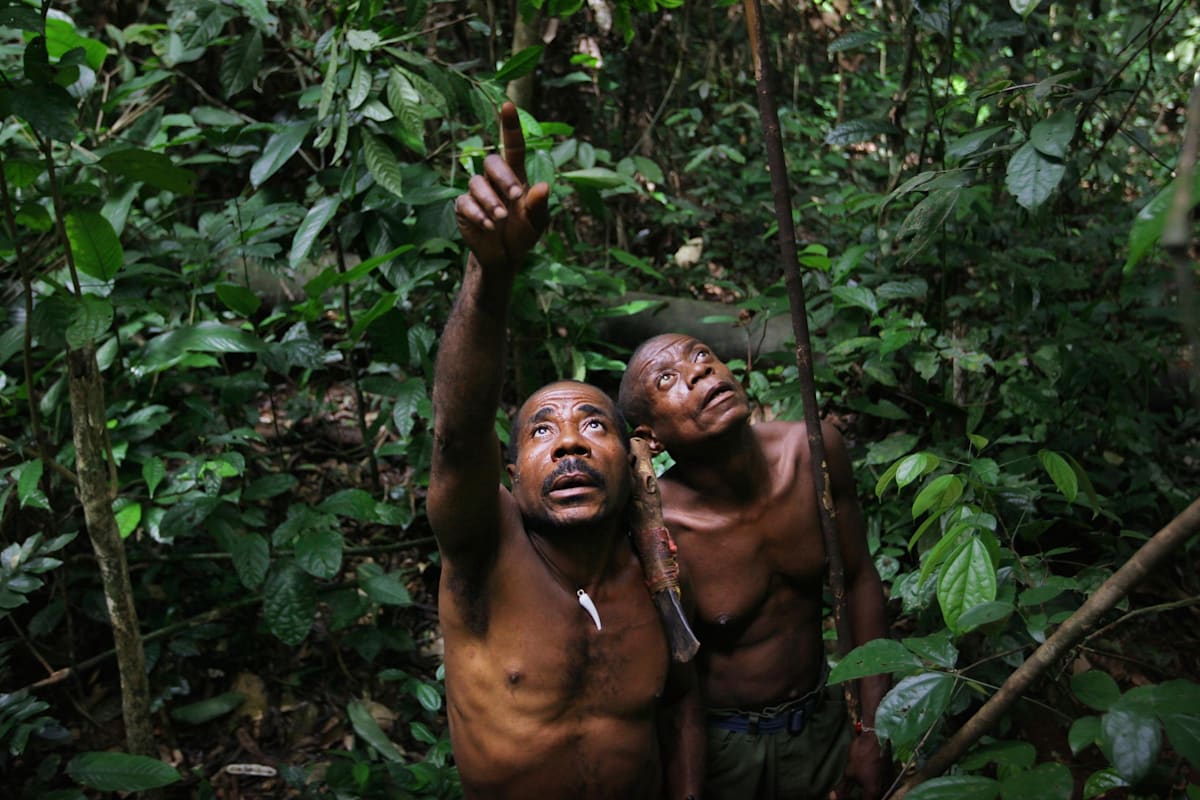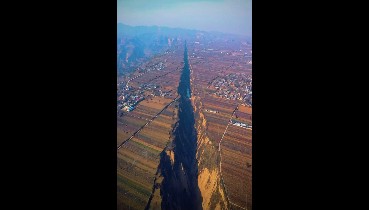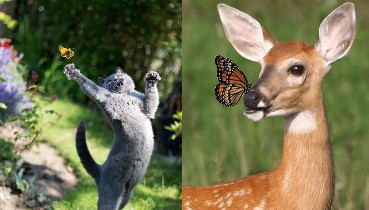
Amazing Nature
03 November 2024 ( 1133 views )

Advertisements
Meet 8 of the world’s most remote tribes
They're hidden in the deepest, darkest corners of the Earth – or in the vast, remote plains of Africa. Tiny pockets of people whose customs, dress and traditions have remained decidely anachronistic.
While they may only don traditional dress or use ancient hunting methods on special occasions these days, there's no question that the people in these pictures live a lot closer to their old way of life than the average.
Meet eight incredible indigenous tribes – and see what makes them unique.
Huli Wigmen, Papua New Guinea
Location: Tari Highlands, Papua New Guinea
This tribe’s incredible hats are actually made from their own hair, with men in this isolated 40,000-strong group ‘harvesting’ their mane for their own use or to sell to others. They combine these with yellow face paint, a clawed axe, an apron of leaves and a belt of dangling pigtails to intimidate rival tribes. Traditionally, they perform a classic bird dance, mimicking the birds of paradise found on the island.
Future outlook: Successfully blending modern and traditional life, many now wear Western-style clothing and are embracing tourism as a way to keep their tradition alive.
Dogon, West Africa
Location: Mali, West Africa
Using ropes made of baobab bark, men traditionally scale the formidable Bandiagara cliffs to collect pigeon or bat guano, which is sold as fertiliser, and Tellem artefacts, which are sold to Western art collectors. More than 400,000 live in around 700 little villages precariously perched all the way along the 200km cliff escarpment.
Future outlook: The tribe thrived on tourism dollars, but recent unrest has reduced visitors and poor crop harvests are making life much harder.
Chimbu Skeleton Dancers, Papa New Guinea
Location: Chimbu Province, Papua New Guinea
It may be a look we're familiar with, but this tribe’s skeleton dances originated to intimidate enemy tribes in what is a hotly-contested and highly-territorial country. They are so remote that little is known about their real lives, but it is understood they live in a temperate climate in rugged mountain valleys between 1,600 and 2,400m, traditionally in male-female segregated houses but increasingly sharing as families.
Future outlook: Slowly increasing tourism interaction means dances are starting to be done more as shows by community-integrated people, than by the more remote in a traditional setting.
Nenet, Siberia
Location: Yamal Peninsula, Siberia
This group of around 10,000 nomads are pretty hardy – they move 300,000 reindeer on a 1,100km migration around an area one-and-a-half times the size of France, in temperatures down to minus 50 degrees Celsius. They travel on sledges anointed with freshly-slaughtered reindeer blood, in trains that stretch up to 8km long. Despite discovery of oil and gas reserves in the 1970s, they are adapting well to increasing contact with the outside world.
Future outlook: Bucking the trend of dwindling global nomadic groups, they are adapting to the social, political and natural change around them.
Asaro mud men
Location: Goroka, Papua New Guinea
These mud-covered men are not aiming for the perfect complexion, they slap on the brown stuff because they believe it makes them look like spirits and it terrifies the other indigenous groups in the area. One of many groups scattered on the highland plateau for over a millennium, they are isolated by harsh terrain and were only discovered around 75 years ago.
Future outlook: Success as a tourist attraction has enlarged the tribe’s potential as a national symbol.
Himba herders, Namibia
Location: Namibia, Africa
Semi-nomadic, the Himba live scattered across northwest Namibia and southern Angola. When stationary, they live in tipi-shaped structures built with mud and dung. Curious fact: They keep an ancestral fire burning 24 hours a day in homage to their god Mukuru. Wealth is measured in cattle, but goat is a more regular part of the diet.
Future outlook: There's an estimated 20,000 to 30,000 members of the tribe left, but they're constantly threatened by new development. Nevertheless, many maintain their traditional lifestyle.
Kazakh golden eagle hunters
Location: Bayan-Olgii Province, Mongolia
They use eagles to hunt foxes, marmots and wolves and wear furs of the prey they catch, with boys starting at the age of 13, when they can prove they can carry the weight of a golden eagle. Semi-nomadic, they have been moving around the Altai Mountains since the 19th century. They now number around 100,000 people, but there are only around 250 eagle hunters left.
Future outlook: Because young men are being drawn away, females are starting to break into this masculine-dominated activity to keep it alive.
Bayaka, Central African Republic
Location: Southwest Rainforests, Central African Republic (CAR)
Living by the ‘Jengi’, the spirit of the forest, the Aya have rich knowledge of herbal medicine but use their own language and hunting traditions. They are one of a number of tribes in this remote area of Africa making up a population of half a million. However, elders now report they cannot teach the traditional skills because they can no longer go deep into the forest.
Recommended Videos
 Raccoon Forms Sweetest Friendship With Deer Who Lost Her Mom91 views
Raccoon Forms Sweetest Friendship With Deer Who Lost Her Mom91 views New Zealand’s Amazing Moeraki Boulders Have Grown for 60 Million Years To Look Like This68 views
New Zealand’s Amazing Moeraki Boulders Have Grown for 60 Million Years To Look Like This68 views-
Advertisements
 Dutch Photographer Captures The Most Flamboyant And Dangerous Creatures46 views
Dutch Photographer Captures The Most Flamboyant And Dangerous Creatures46 views Birds Surprised People With Their Funny And Unconventional Actions62 views
Birds Surprised People With Their Funny And Unconventional Actions62 views The red-crowned crane (Grus japonensis)333 views
The red-crowned crane (Grus japonensis)333 views 30+ Floral Tattoos for Stylish Girls910 views
30+ Floral Tattoos for Stylish Girls910 views The snake gourd flower (Trichosanthes cucumerina)244 views
The snake gourd flower (Trichosanthes cucumerina)244 views Top 15 Most Exotic Flowers Around The World20 views
Top 15 Most Exotic Flowers Around The World20 views
Advertisements
